This article needs additional citations for verification .(February 2024) |
| 1855 in Brazil |
|---|
| Flag |
 19 stars (1823–70) |
| Timeline of Brazilian history |
| Empire of Brazil |
| Year of Constitution: 1824 |
Events in the year 1855 in Brazil .
This article needs additional citations for verification .(February 2024) |
| 1855 in Brazil |
|---|
| Flag |
 19 stars (1823–70) |
| Timeline of Brazilian history |
| Empire of Brazil |
| Year of Constitution: 1824 |
Events in the year 1855 in Brazil .
| | This section is empty. You can help by adding to it. (September 2017) |

William John Swainson FLS, FRS, was an English ornithologist, malacologist, conchologist, entomologist, and artist.

Botucatu is a city in the southeastern region of Brazil and is located 224.8 km (139.7 mi) from São Paulo, the capital of the state of São Paulo. It has an estimated population of 148,130 in an area of 1,482.64 km2 (572 sq mi). It lies on the top of a plateau. Botucatu became a village in 1855, and a city in 1876.

Manuel Antônio de Almeida was a Brazilian satirical writer, medician and teacher. He is famous for the book Memoirs of a Police Sergeant, written under the pen name Um Brasileiro. He is the patron of the 28th chair of the Brazilian Academy of Letters.
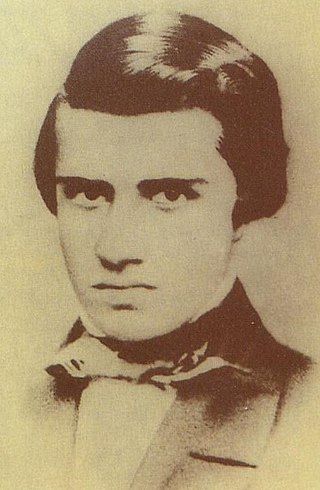
Manuel Antônio Álvares de Azevedo, affectionately called "Maneco" by his close friends, relatives and admirers, was a Brazilian Romantic poet, short story writer, playwright and essayist, considered to be one of the major exponents of Ultra-Romanticism and Gothic literature in Brazil. His works tend to play heavily with opposite notions, such as love and death, platonism and sarcasm, sentimentalism and pessimism, among others, and have a strong influence of Musset, Chateaubriand, Lamartine, Goethe and – above all – Byron.

Joaquim Manuel de Macedo was a Brazilian novelist, doctor, teacher, poet, playwright and journalist, famous for the romance A Moreninha. He is considered the first Brazilian novelist.

Luís José Junqueira Freire was a Brazilian poet and Benedictine monk, adept of the "Ultra-Romanticism" movement and author of Inspirações do Claustro. He is the patron of the 25th chair of the Brazilian Academy of Letters.
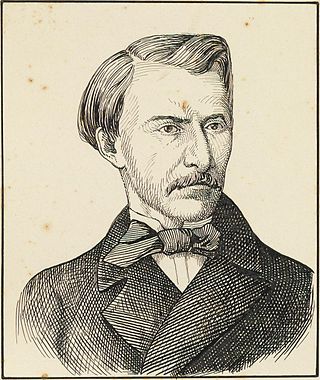
Domingos José Gonçalves de Magalhães, Viscount of Araguaia, was a Brazilian poet, playwright, physician and diplomat. He is considered the founder of Romanticism in Brazilian literature, and was a pioneer of Brazilian theatre.

Manuel José de Araújo Porto-Alegre, Baron of Santo Ângelo, was a Brazilian Romantic writer, painter, architect, diplomat and professor, considered to be one of the first Brazilian editorial cartoonists ever. He is the patron of the 32nd chair of the Brazilian Academy of Letters.
Ultra-Romanticism was a Portuguese and Brazilian literary movement that took place during the second half of the 19th. Aesthetically similar to the German- and British-originated Dark Romanticism, it was typified by a tendency to exaggerate the norms and ideals of Romanticism, namely the value of subjectivity, individualism, amorous idealism, nature and the medieval world. The Ultra-Romantics generated literary works of highly contendable quality, some of them being considered as "romance of knife and earthenware bowl", given the succession of bloody crimes that they invariably described, which realists fiercely denounced.
Cyril IX Moghabghab served as Patriarch of Antioch and All the East, and Alexandria and Jerusalem of the Melkite Greek Catholic Church from 1925 to 1947.
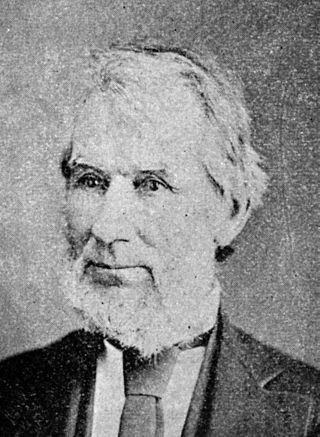
John Upfold Pettit was an American lawyer and politician who served three terms as a U.S. Representative from Indiana from 1855 to 1861.

São Gabriel is a municipality in the state of Rio Grande do Sul, Brazil.
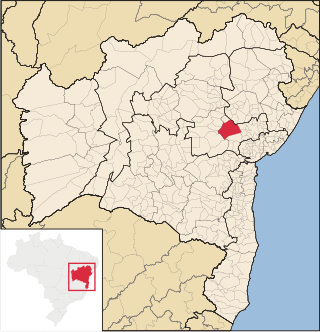
Ipirá is a municipality in Bahia, Brazil, with a population of 59,435. It was founded in 1855.
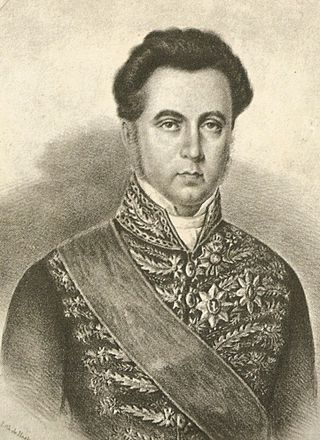
Aureliano de Sousa e Oliveira Coutinho, Viscount of Sepetiba was a Brazilian politician, judge and monarchist during the period of the Empire of Brazil (1822–1889). He was the leader of the "Courtier Faction", a political faction composed of high-ranking palace servants and notable politicians who exercised a strong influence over Emperor Pedro II in his early years.

The Monument to the Independence of Brazil is a granite and bronze monument located in the Independence Park in São Paulo, Brazil. It is also known as the Ipiranga Monument or the Altar of the Fatherland. The monument is located on the banks of the Ipiranga Brook, on the historic site where prince regent Pedro proclaimed the independence of the country on 7 September 1822.

Tejuca was a small 470-ton clipper ship built in Hoboken, New Jersey in 1854. After only eighteen months of service, she was lost in a hurricane on the North Atlantic, with most of her crew rescued through a daring maneuver carried out by the ship Excelsior.